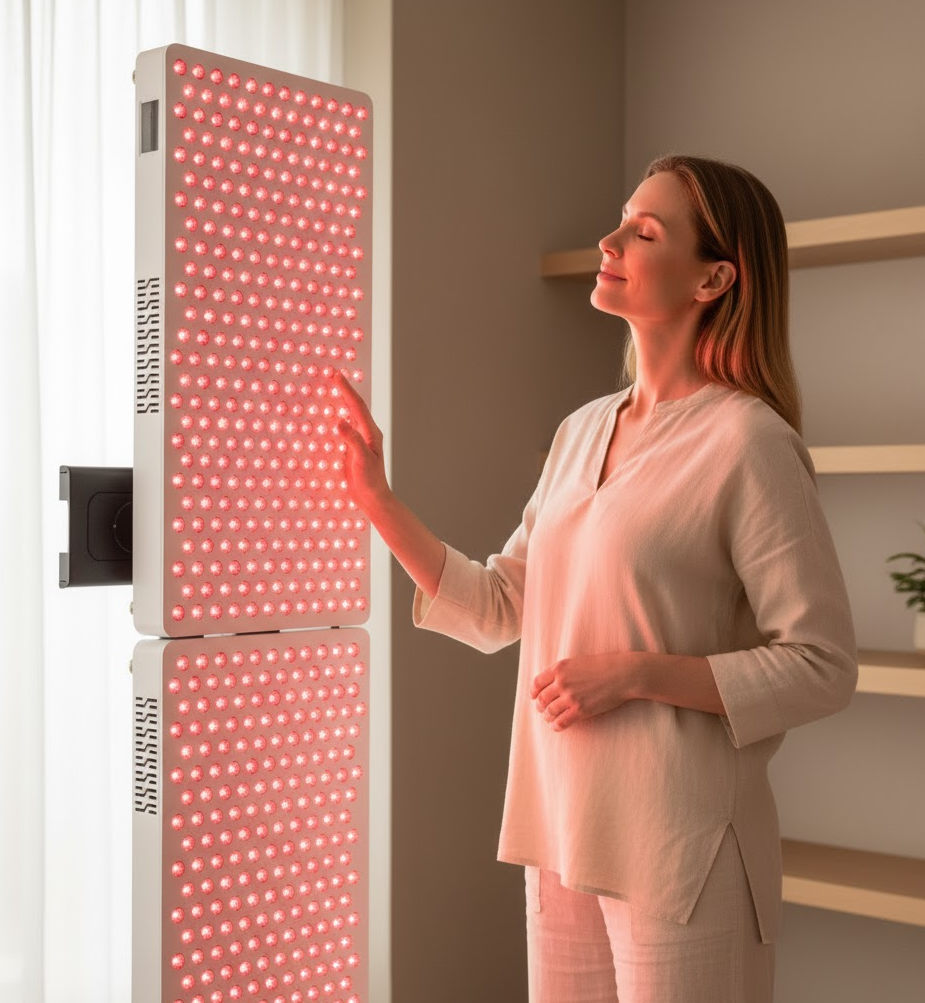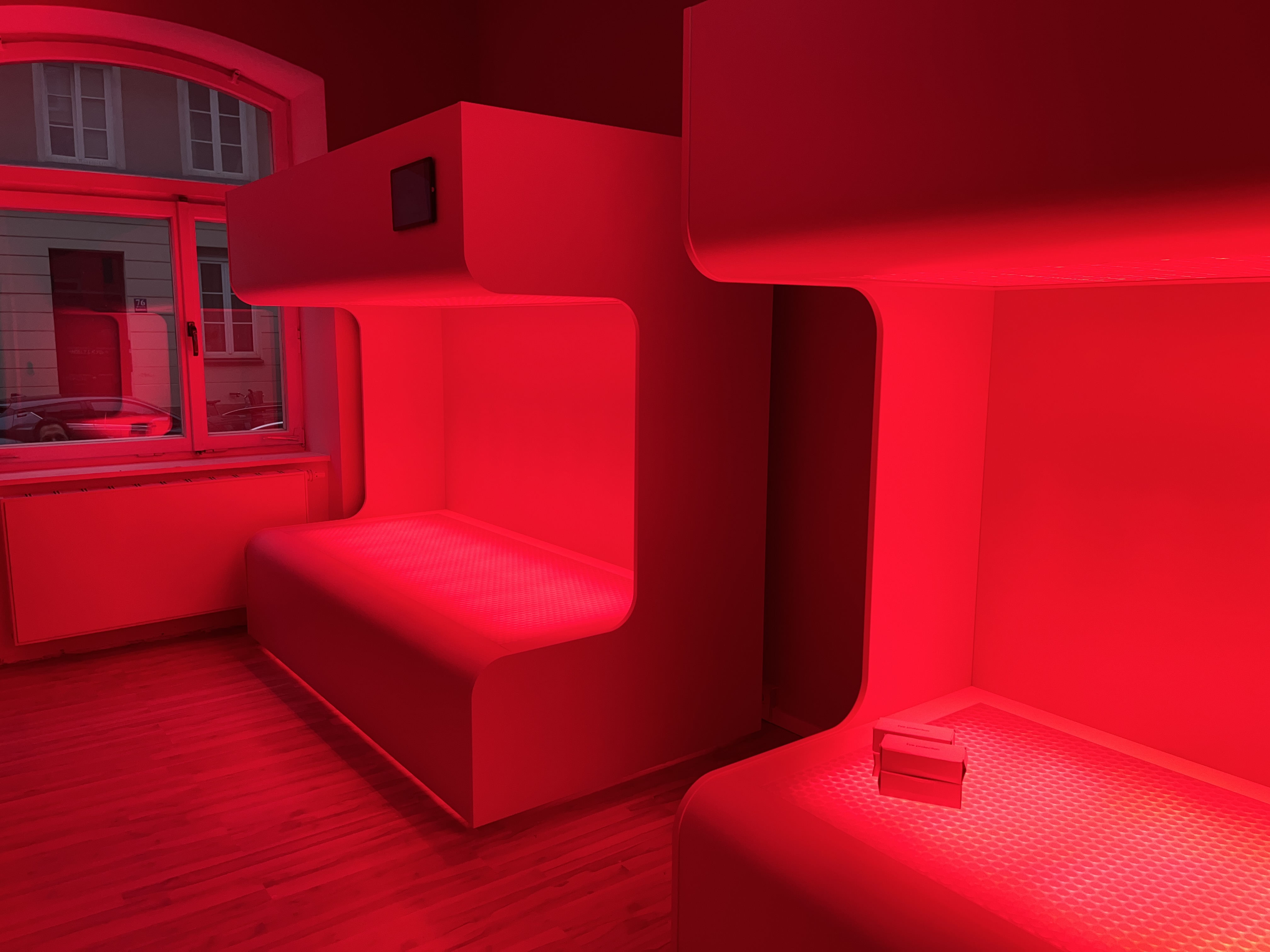
Our society today is marked by significant changes. More women and couples are focusing on various aspects of life at a younger age and taking their time planning for children. Statistics from the Australian Institute of Family Studies (AIFS) reveal that in 1971, nearly 50% of mothers had their first child between the ages of 20-24. In contrast, by 2020, only about 14% of mothers in this age range gave birth, while roughly 35% of mothers were in the 30-34 age group.
Additionally, as people generally live longer, this often leads to delaying the decision to have children. A major challenge is the increasing infertility many aspiring parents face as they age. The quality of egg and sperm cells declines with time, making conception more difficult. Consequently, factors like a woman’s age and a man’s sperm quality are among the most common causes of infertility.
At the same time, advancements in technology offer new possibilities. Photobiomodulation (PBM) is emerging as a promising, non-invasive, and accessible method to support fertility.
In this article, we explore how PBM can be beneficial in addressing fertility challenges. At Luminous Labs, we are committed to developing scientifically supported technologies that are distinct from medical devices. Through our expertise and rigorous research, we aim to provide insights and knowledge while offering innovative solutions.
What is Photobiomodulation?
To understand the connection between PBM and fertility, let’s first define the term. The therapeutic use of light dates back over 10,000 years. Ancient Egyptians and Greeks recognized that sunlight could positively influence health and well-being.
In recent decades, NASA has extensively researched LED light, finding that red and near-infrared wavelengths in the 600-900 nanometer (nm) range can alter cellular function. These wavelengths improve the mitochondria's ability to generate energy (ATP) more effectively.
PBM, also known as low-level laser therapy (LLLT), uses light to stimulate cells, converting light energy into metabolic energy. This process enhances cellular performance and regeneration.
Introduction of the Experts
This article draws on insights from two PBM experts focused on longevity research.
- Barbara Sekulovska, a Ph.D. student in psychology and inclusive education, co-founded Luminous Labs with the mission of helping people live longer, healthier lives.
- Thomas Lechner, a Ph.D. student in lighting design and the company’s second founder, shares a passion for using PBM to assist people in various life situations, including fertility.
Their work is inspired by bioinformatician Aubrey de Grey, who emphasizes the role of aging in fertility challenges, and neuroscientist Andrew D. Huberman, who explores the impact of mitochondria on reproductive health.
The Fertility Challenge
As people age, declining fertility becomes a challenge for many couples. This is primarily due to the deteriorating quality of egg and sperm cells. Mitochondria, known as the "power plants" of cells, play a key role in this process by generating energy needed for cellular functions.
The oocyte (egg cell) contains about 6,000 mitochondria, far more than the average 2,000 found in other body cells. Similarly, sperm cells rely on mitochondria to provide the energy needed for movement toward the egg, which is crucial for fertilization.
However, mitochondrial efficiency decreases with age, reducing ATP production and energy availability, which impacts both eggs and sperm. PBM is considered a promising method to counteract these effects.

Mitochondria and Fertility
Mitochondria are vital for energy production in both sperm and egg cells. In sperm, mitochondria influence:
- Sperm motility.
- Acrosome reactions.
- Sperm-egg fusion.
In oocytes, mitochondria are critical for meiotic division, calcium metabolism, and cellular adaptation to stress. They also play a role in epigenetic events that may affect embryo development.

Photobiomodulation and Fertility
PBM stimulates mitochondrial activity in all body cells, including oocytes and sperm, potentially slowing the aging process.
Female Fertility
According to the WHO, 17.5% of people worldwide experience infertility. Women's fertility declines significantly after their late 30s, with mitochondrial dysfunction being a key factor. PBM can stimulate cellular activity and delay this decline.
In a 2018 study, an invasive PBM method showed improvements in mitochondrial activity and endometrial receptivity. Non-invasive methods, like those offered by Luminous Labs, aim to provide similar benefits without the associated risks.

Male Fertility
Male infertility affects approximately 7.5% of men in Europe. PBM has been shown to improve sperm motility and metabolism by enhancing mitochondrial function and ATP production. This non-invasive approach offers a chemical-free alternative to improve sperm quality.

Application Scenarios
Luminous Labs offers light panels with adjustable intensities and a spectrum of 600-900 nm wavelengths. These devices are designed for private use, allowing users to integrate PBM into their routines conveniently.
Example: Female Infertility
A 36-year-old woman struggling to conceive could use PBM panels at home to stimulate her oocytes and enhance energy production. Similarly, her partner could use the same device to improve sperm motility. This dual approach could increase the likelihood of conception.
Beyond fertility, PBM offers additional benefits, such as:
- Hormonal balance.
- Improved mood.
- Enhanced skin health.
- Better sleep.
- Faster muscle recovery.

Focus: Study
A Japanese study (Ohshiro et al., 2012) found that PBM helped 22% of women achieve pregnancy, with 59.5% resulting in live births. Participants had previously failed to conceive through assisted reproductive technology. The light was applied to the neck area, stimulating blood flow and cellular function, with results evident after 21 sessions.

Conclusion
Infertility is a growing concern, but PBM presents exciting opportunities to address it. By activating mitochondria in reproductive cells, PBM offers a non-invasive way to enhance fertility.
With approximately 6,000 mitochondria in oocytes, the potential for PBM to make a significant impact is clear.
Are you ready to shine a light on fertility? If you found this article helpful, share it with your network. For personal PBM solutions, explore our products today.
See how red light supports your goals - explore the product benefits now.

Sources
- Luminousred Photobiomodulation Research Database (2023).
- Australian Institute of Family Studies (AIFS).
- Laser Therapy Study on Japanese Females (2012).
- CityPulse Acupuncture (2022).
- Endre Mester: The History of Photobiomodulation (2017).
- WHO Fertility Statistics (2023).
- Huberman Lab Podcast on Fertility (2023).
- The Role of Mitochondria in Fertility (2022).
- Photobiomodulation Therapy for Male Infertility (2020).
- Effects of PBM on Human Sperm (2023).
- Pulsed-Wave PBM Effects on Spermatozoa (2022).
- WHO Global Age Structure Report (2019).
- Interview with Aubrey de Grey (2020).













